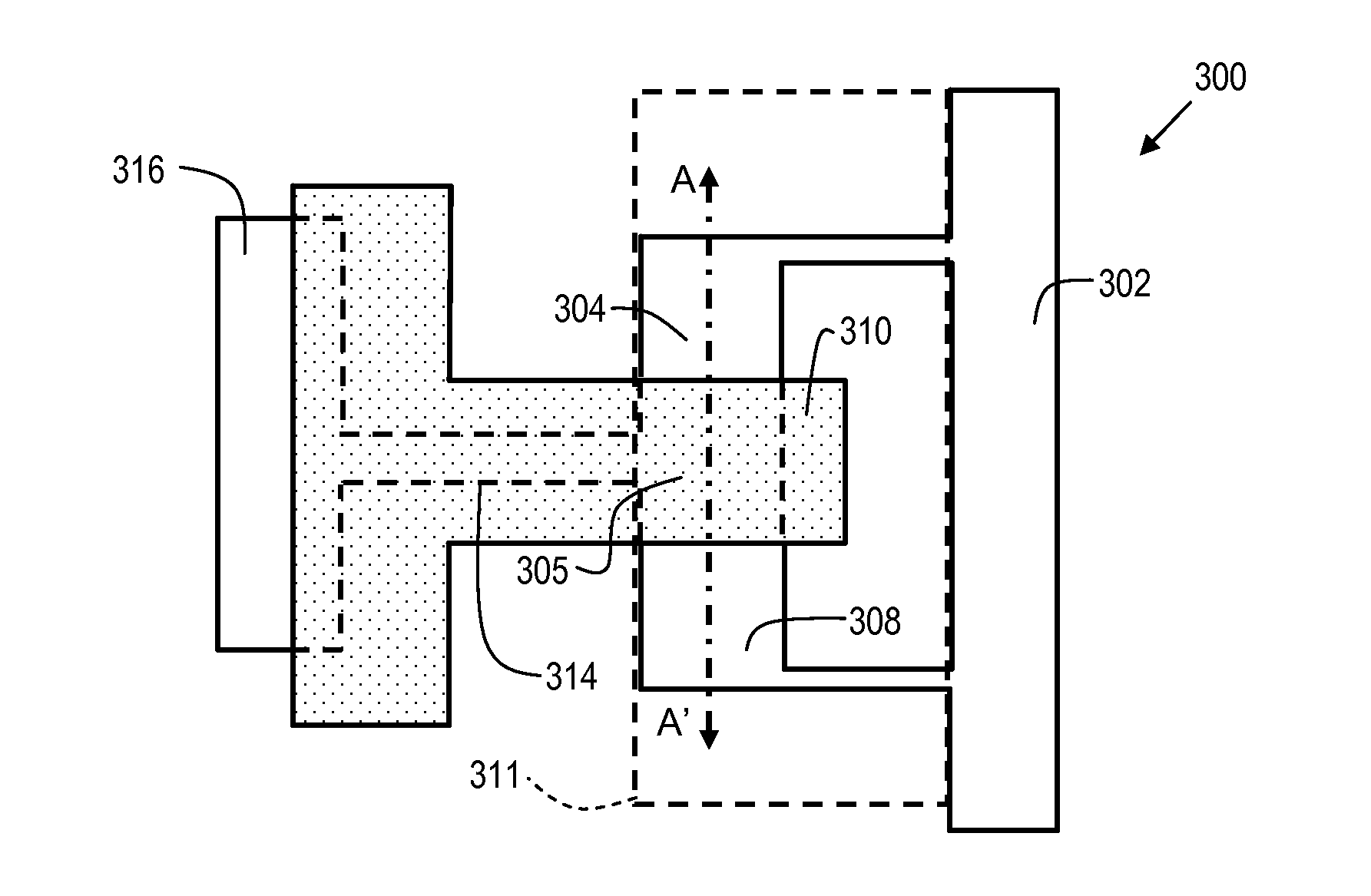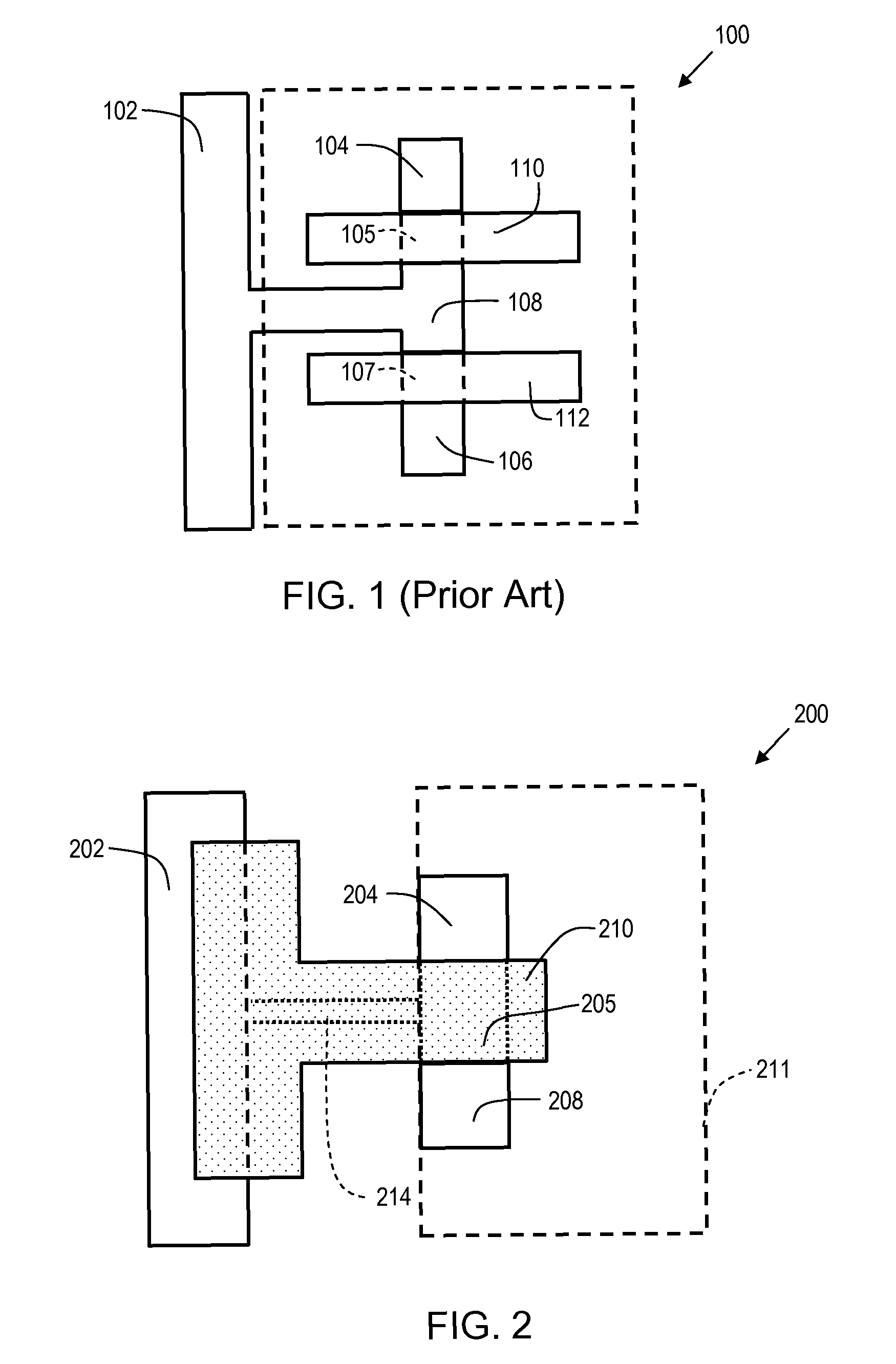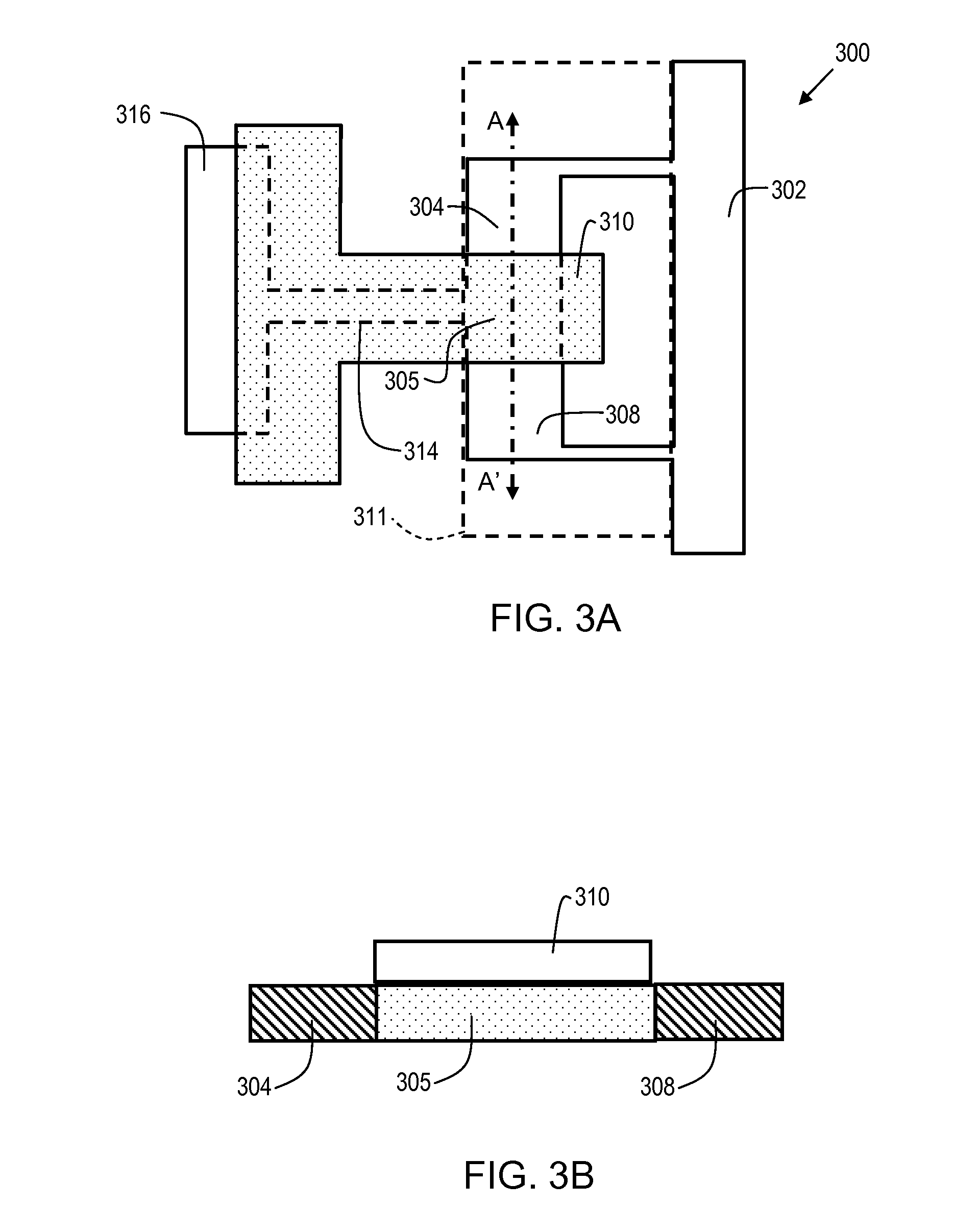In-line voltage contrast detection of PFET silicide encroachment
a technology of in-line voltage contrast and silicide encroachment, which is applied in the direction of individual semiconductor device testing, semiconductor/solid-state device testing/measurement, instruments, etc., can solve the problems of consuming a large area of probe pads, affecting cmos technology, and killing associated devices
- Summary
- Abstract
- Description
- Claims
- Application Information
AI Technical Summary
Problems solved by technology
Method used
Image
Examples
Embodiment Construction
[0023]In order to provide some context for the description of embodiments of the present invention, the prior art structure of FIG. 1 will be briefly described below. FIG. 1 shows a test structure 100 which is used for NFET evaluation. The test structure 100 is comprised of N+ source regions 104 and 106, and gate stacks 110 and 112. N+ drain region 108 is disposed between gate stacks 110 and 112. Therefore, test structure 100 is essentially comprised of two NFET transistors in series, with the common drain 108 grounded via connection to ground bus 102. Therefore, the junction between N+ source region 104, and P+ region 105 (which is under gate stack 110) is an NP junction. Similarly, the junction between N+ source region 106 and P+ region 107 (which is under gate stack 112) is an NP junction.
[0024]When a SEM electron beam scans the surface of test structure 100, the primary electrons emitted by the SEM cause more secondary electrons to be ejected from the N+ source regions 104 and 1...
PUM
 Login to View More
Login to View More Abstract
Description
Claims
Application Information
 Login to View More
Login to View More - R&D
- Intellectual Property
- Life Sciences
- Materials
- Tech Scout
- Unparalleled Data Quality
- Higher Quality Content
- 60% Fewer Hallucinations
Browse by: Latest US Patents, China's latest patents, Technical Efficacy Thesaurus, Application Domain, Technology Topic, Popular Technical Reports.
© 2025 PatSnap. All rights reserved.Legal|Privacy policy|Modern Slavery Act Transparency Statement|Sitemap|About US| Contact US: help@patsnap.com



